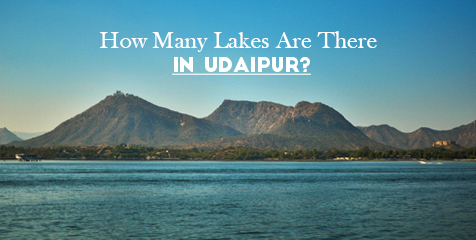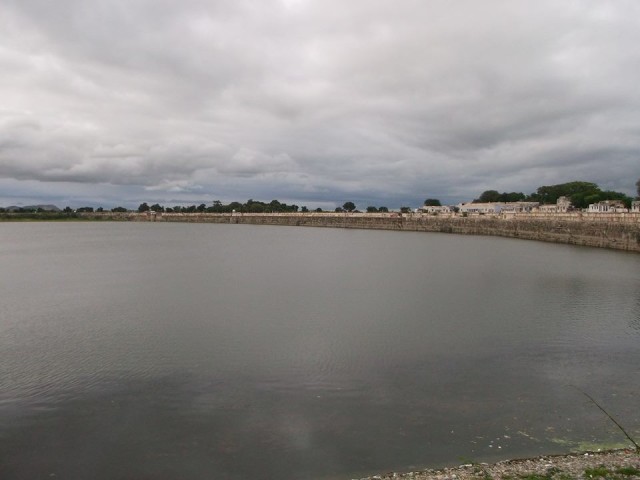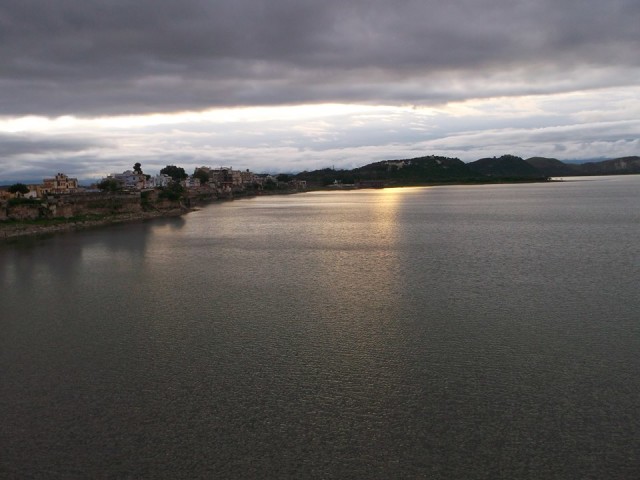Udaipur is known as the City of Lakes and indeed the phrase used is correct. Udaipur has a number of lakes and often people get confused in counting the exact number! Well, the whole city is beautifully lined by various lakes and parts of the city also experience the Ayad river crossing under the several bridges. The vicinity of the city is so tranquil that one might get totally mesmerized by it. So, coming back to the question; let’s find out how many lakes are in Udaipur.
The famous ones:
These lakes are the ones which are the biggest and lie in close proximity from the city center. Not only this, these ones are the most visited by tourists and locals.
-
Fateh Sagar Lake
Fateh Sagar Lake is the second artificial lake of Udaipur after Jaisamand lake. It was built in 1678 by Maharana Jai Singh. Then in 1889, Maharana Fateh Singh built the “Connaught Dam,” near ‘Dewali’ and subsequently the dam enlarged the lake, and hence was renamed after the King Maharana Fateh Singh.

Attractions at the Lake Fateh Sagar:
- Boating
- Food Bazaar
- Camel and Horse Rides
- Several parks for recreational activities.
-
Pichola Lake
Pichola Lake is the oldest and one of the largest lakes in Udaipur. Most of the luxurious hotels are in this area and has the massive City Palace standing on the banks. The Taj Lake Palace resting in the middle of the waters of the Lake Pichola is an eye-pleasing sight. The name ‘Pichola’ has two legends behind it, that you can read here.

Attractions at the Pichola Lake:
- Boating
- Visit Jag Mandir
- Visit Taj Lake Palace
- Innumerable eateries surrounding the lake
-
Badi Lake
Situated near the Village Badi, the lake is also called by the name Jiyan Sagar named after Jana Devi, the mother of Maharana Raj Singh who built the lake. It sprawls in an area of 155 sq. km. and the embankment of the lake extends wide in area. It also boasts three beautiful ‘chattris’.

Attractions at the Badi Lake:
- Boating
- Badi ‘Paal’
-
Udai Sagar
Udaisagar Lake is located at a distance of about 13 km in the east of Udaipur. The construction of this lake was started in 1559 by Maharana Udai Singh. Completed in 1565, the Maharana constructed a dam on Berach River to guarantee ample supply of water in his kingdom and Udai Sagar was the result of this Dam.

The lake gets its name from the Maharana who built it.
Other Lakes:
These lakes the branches or links to the larger ones in the city. While these are smaller than the above-mentioned ones they have their equal charm.
-
Swaroop Sagar
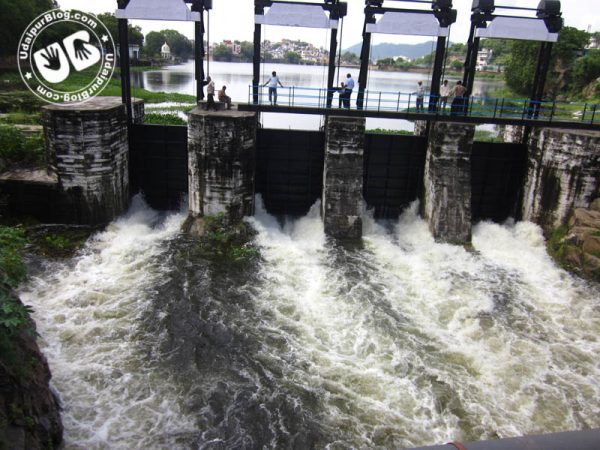
Source: udaipurblog
This small artificial lake created by Maharana Swaroop Singh gets its name from him. It is also known as Kumharia Talab. Swaroop Sagar is located near Chand Pol adjoining Rangsagar (which is a branch of Pichola Lake). Kumharia Talab or Swaroop Sagar is connected with Lake Pichola and Lake Fateh Sagar.
-
Dhoodh Talai
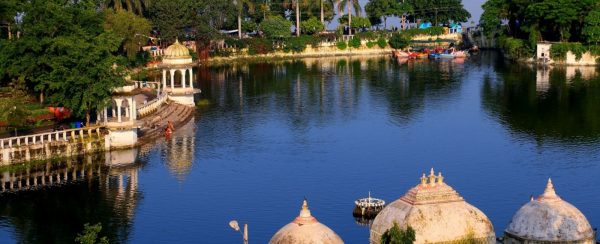
Source: Venuezz
Doodh Talai is a small lake near Pichola Lake. Doodh Talai (meaning milk pond) fulfilled the basic needs of cows that were present in government cow shelters (Raajakeey Goshalas) that met the requirement of milk in the royal kitchen. The freshwater reservoir was primarily meant for the Royal concern.
-
Purohito ka Talab
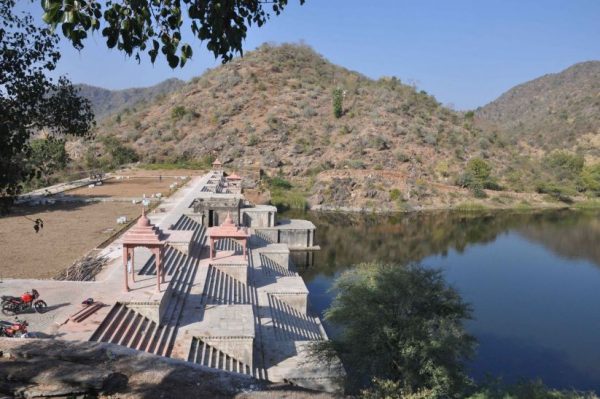
Source: patrika
‘Purohito ka Talab’ is being developed as a new destination for tourists. It is located at a distance of about 12 kilometers from Udaipur, in Amberi Panchayat which is also known as Mini Jaisalmer. The Reddish-Orange Chattris are a major attraction there.
-
Goverdhan Sagar
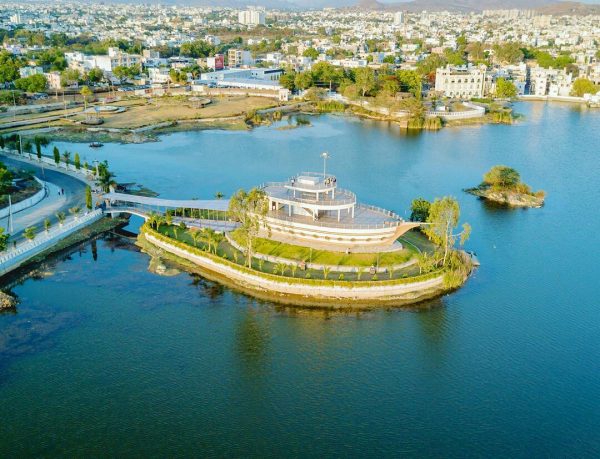
Source: Saurabh Patwari Photography
Located on the outskirts of Udaipur this place is less visited by the tourists or locals due to its distance from the city center. However, the local government bodies have worked a lot towards making it a hot-spot. A ship (structure) was also installed in the water to attract people. The people residing in the nearby colonies do come and enjoy evenings at the Goverdhan Sagar.
-
Madaar (Chota-Bada)
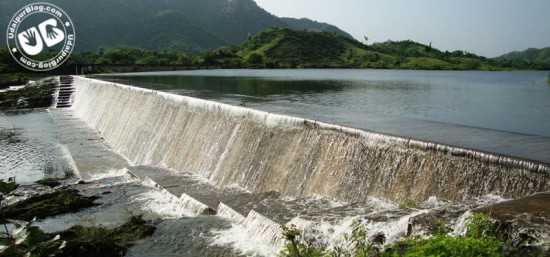
Source: Udaipurblog
The Main source of water in Fatehsagar is the Madaar Lake (Chhota). These two water bodies (and must be counted as two different lakes) are known under a single name ‘Madaar’ and colloquially people refer to them as ‘Chota Madaar’ and ‘Badaa Madaar’ meaning small and large Madaar. Water comes from Madar Lake and Swaroop Sagar Link Channel to fill up the lake Fatehsagar.
The nearby ones:
-
Jaisamand Lake
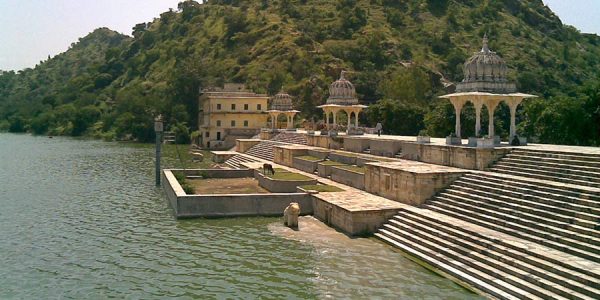
Source: rajasthan direct
Jaisamand Lake is the second largest artificial lake in Asia. It is situated at a distance of approximately 51 km from the city of Udaipur. The lake is also known as Dhebar Lake. It was built by Maharana Jai Singh while making a dam on the Gomti River in the year 1685. He kept the name of the lake Jaisamand after his known name; Jaisamand means ‘Ocean of Victory’.
-
Rajsamand Lake
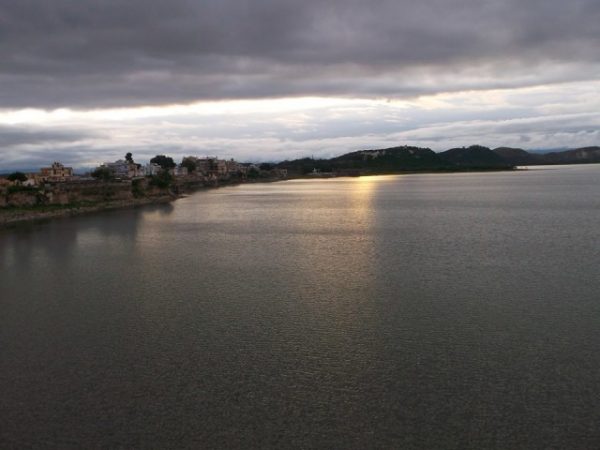
Source: Hemant Paliwal
Located 66 km north of Udaipur, Rajsamand Lake lies between Rajnagar and Kankroli districts. It is also known as Rajsamudra Lake. The lake was a result of a dam constructed across the river Gomati, Kelwa, and Tali; built by Maharana Raj Singh I in the years 1662-1676. One of the major attractions at the Rajsamand Lake is the array of nine pavilions or ‘nauchowki’ (nine ghats) that are beautifully adorned with pictures of the sun, chariots, gods, birds and detailed carvings.
